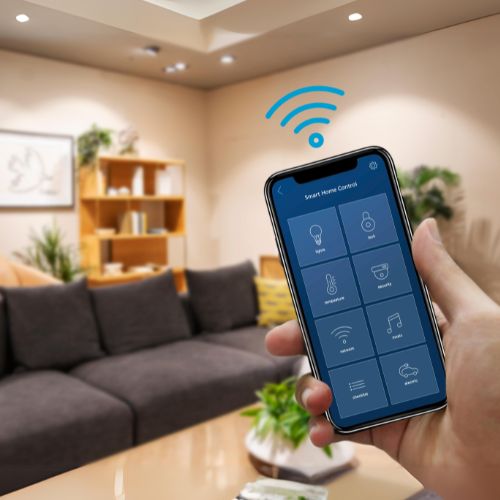
How Smart Devices Are Making Home Security More Affordable
Advances in technology have made home security more accessible and affordable for many households. Smart devices like cameras, doorbells, and sensors allow homeowners to create personalized, budget-friendly security systems without the need for professional installation or expensive contracts. This post will explore how smart devices are revolutionizing home security and provide practical tips on how to choose the best options for your needs.
What Are Smart Home Security Devices?
Smart home security devices are technology-based tools that connect to your home’s Wi-Fi network and can be controlled via smartphone apps. These devices allow homeowners to monitor their homes in real time, receive alerts, and even control functions remotely. Examples include smart cameras, video doorbells, motion detectors, and smart locks.
How Smart Devices Reduce Costs
One of the biggest advantages of smart devices is their cost-effectiveness. Traditional home security systems often involve expensive upfront costs, monthly fees, and professional installation. In contrast, smart home security devices are generally more affordable, easy to install, and don’t require ongoing fees unless you choose premium monitoring services.
Here are a few ways smart security devices make home protection affordable:
- No Installation Fees: Many smart devices come with simple DIY setups, eliminating the need for professional installers.
- No Long-Term Contracts: Unlike traditional systems, smart devices usually don’t require long-term service contracts, which can reduce costs significantly.
- Customizable Options: You can purchase only the devices you need, allowing you to scale your security system based on your budget.
- Lower Maintenance Costs: With smart devices, you have more control over your system, leading to lower maintenance and service costs over time.
Popular Smart Security Devices
- Smart Cameras: These allow you to view live footage of your home from anywhere. Many offer motion detection and night vision.
- Video Doorbells: With built-in cameras, these devices notify you when someone is at your door, even if you’re not home. Some models allow two-way communication.
- Smart Locks: These can be controlled remotely and provide keyless entry to your home.
- Motion Sensors: When connected to your system, these devices can trigger alarms or send notifications when movement is detected.
- Smart Security Hubs: These serve as the central control for multiple security devices, making system management easier.
Benefits of Smart Home Security Devices
- Remote Monitoring: Smart devices allow you to monitor your home from anywhere using your smartphone or tablet. Whether you’re at work or on vacation, you can check on your home in real time.
- Instant Alerts: You’ll receive instant notifications if something unusual happens, such as motion near your door or a potential break-in.
- Integration with Other Smart Devices: Many smart home security devices can be integrated with other smart systems, such as smart lights and thermostats, for more comprehensive home management.
- Increased Peace of Mind: With the ability to check on your home anytime, smart devices provide a heightened sense of security.
How to Choose Smart Security Devices
Choosing the right smart home security system depends on your specific needs and budget. Here are some considerations:
- Budget: Determine how much you’re willing to spend. Remember that you can start small and add devices over time.
- Features: Look for devices that offer features important to you, such as HD video, night vision, or two-way audio.
- Ease of Use: Choose devices that are easy to install and have user-friendly apps.
- Integration: Consider whether the device can integrate with other smart devices in your home, such as smart lighting or virtual assistants like Alexa or Google Assistant.
Practical Tips for Smart Home Security
- Start with a Basic System: If you’re on a tight budget, start with essential devices such as a video doorbell and smart lock, and expand your system as needed.
- Use Two-Factor Authentication: For added security, use two-factor authentication on the apps that control your smart devices to prevent unauthorized access.
- Regular Updates: Keep your devices updated to the latest firmware to ensure they’re secure from potential vulnerabilities.
- Consider Battery Backup: In case of power outages, choose devices with battery backup to ensure continuous protection.






